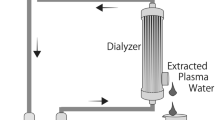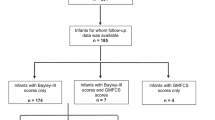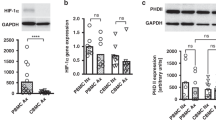Abstract
Background
The correlation between procoagulant levels—factor VIII (FVIII), von Willebrand factor (vWF), and fibrinogen—and risk of thrombosis has been well documented in adult populations. We hypothesize that interaction of passively transferred isoagglutinins in premature neonates with a compromised immune system may trigger an immune response that can target the immature gastrointestinal tract. The objective of this study is to evaluate if there are procoagulant level differences in preterm newborns stratified by ABO blood group.
Methods
VWF, FVIII, and fibrinogen levels were analyzed in neonates ≤32 weeks and/or birthweight ≤1500 g over the first 6 weeks of life. Demographic, blood type, and transfusion data were collected.
Results
Elevations in vWF and FVIII were found to be statistically significant in the third week of life in non-O neonates vs. type O neonates. FVIII was also found to be significantly elevated in week 1. Transfused neonates also showed elevations between weeks 0 and 3.
Conclusion
There appears to be a time-dependent variation in procoagulant factor levels in preterm newborns. Although the clinical significance remains unclear, prothrombotic factors vWF and FVIII are significantly higher in non-O blood-type preterm neonates in the third week of life.
Similar content being viewed by others
Log in or create a free account to read this content
Gain free access to this article, as well as selected content from this journal and more on nature.com
or
References
Eastlund, T. The histo-blood group ABO system and tissue transplantation. Transfusion 38, 975–88 (1998).
Greenwell, P. Blood group antigens: molecules seeking a function? Glycoconj. J. 14, 159–73 (1997).
Egawa, N. et al. ABO blood type, long-standing diabetes, and the risk of pancreatic cancer. World J. Gastroenterol. 19, 2537–42 (2013).
Medalie, J. H. et al. Blood groups, myocardial infarction and angina pectoris among 10,000 adult males. N. Engl. J. Med. 285, 1348–53 (1971).
Conlan, M. G. et al. Associations of factor VIII and von Willebrand factor with age, race, sex, and risk factors for atherosclerosis. The Atherosclerosis Risk in Communities (ARIC) Study. Thromb. Haemost. 70, 380–5 (1993).
Meade, T. W. et al. Factor VIII, ABO blood group and the incidence of ischaemic heart disease. Br. J. Haematol. 88, 601–7 (1994).
Souto, J. C. et al. Functional effects of the ABO locus polymorphism on plasma levels of von Willebrand factor, factor VIII, and activated partial thromboplastin time. Arterioscler. Thromb. Vasc. Biol. 20, 2024–8 (2000).
McCallum, C. J., Peake, I. R., Newcombe, R. G. & Bloom, A. L. Factor VIII levels and blood group antigens. Thromb. Haemost. 50, 757 (1983).
Mohanty, D. et al. Major blood group antigens—a determinant of factor VIII levels in blood? Thromb. Haemost. 51, 414 (1984).
Gill, J. C., Endres-Brooks, J., Bauer, P. J., Marks, W. J. Jr & Montgomery, R. R. The effect of ABO blood group on the diagnosis of von Willebrand disease. Blood 69, 1691–5 (1987).
Shima, M. et al. ABO blood group genotype and plasma von Willebrand factor in normal individuals. Vox Sang. 68, 236–40 (1995).
Gallinaro, L. et al. A shorter von Willebrand factor survival in O blood group subjects explains how ABO determinants influence plasma von Willebrand factor. Blood 111, 3540–5 (2008).
O'Donnell, J., Mille-Baker, B. & Laffan, M. Human umbilical vein endothelial cells differ from other endothelial cells in failing to express ABO blood group antigens. J. Vasc. Res. 37, 540–7 (2000).
Strauss, R. G. Anaemia of prematurity: pathophysiology and treatment. Blood Rev. 24, 221–5 (2010).
Andrew, M., Paes, B. & Johnston, M. Development of the hemostatic system in the neonate and young infant. Am. J. Pediatr. Hematol. Oncol. 12, 95–104 (1990).
Tsai, H. M. & Lian, E. C. Antibodies to von Willebrand factor-cleaving protease in acute thrombotic thrombocytopenic purpura. N. Engl. J. Med. 339, 1585–94 (1998).
Furlan, M. & Lammle, B. Aetiology and pathogenesis of thrombotic thrombocytopenic purpura and haemolytic uraemic syndrome: the role of von Willebrand factor-cleaving protease. Best. Pract. Res. Clin. Haematol. 14, 437–54 (2001).
Anonymous. Blood types and population 2018. https://www.redcrossblood.org/donate-blood/how-to-donate/types-of-blood-donations/blood-types.html.
Andrew, M. et al. Maturation of the hemostatic system during childhood. Blood 80, 1998–2005 (1992).
Fukui, H. et al. Factor VIII procoagulant activity, factor VIII related antigen and von Willebrand factor in newborn cord blood. Br. J. Haematol. 42, 637–46 (1979).
Maak, B., Scheidt, B. & Frenzel, J. Factor VIII activity and factor VIII related antigen in newborns. Eur. J. Pediatr. 128, 283–9 (1978).
Balla, G. & Karmazsin, L. Factor VIII related antigen in term and preterm newborns with severe neonatal haemorrhage. Acta Paediatr. Hung. 26, 11–5 (1985).
Youssef, L. A. & Spitalnik, S. L. Transfusion-related immunomodulation: a reappraisal. Curr. Opin. Hematol. 24, 551–7 (2017).
Donadee, C. et al. Nitric oxide scavenging by red blood cell microparticles and cell-free hemoglobin as a mechanism for the red cell storage lesion. Circulation 124, 465–76 (2011).
Boral, L. I. et al. Comparison of outcomes of group O vs non-group O premature neonates receiving group O RBC transfusions. Am. J. Clin. Pathol. 140, 780–6 (2013).
Cunningham, K. E., Okolo, F. C., Baker, R., Mollen, K. P. & Good, M. Red blood cell transfusion in premature infants leads to worse necrotizing enterocolitis outcomes. J. Surg. Res. 213, 158–65 (2017).
Dani, C. et al. Red blood cell transfusions can induce proinflammatorycytokines in preterm infants. Transfusion 57, 1304–10 (2017).
Thomson, T. et al. Decreased survival in necrotizing enterocolitis is significantly associated with neonatal and maternal blood group: the AB isoagglutinin hypothesis. J. Perinatol. 12, 630q (2012).
Robbe-Masselot, C., Maes, E., Rousset, M., Michalski, J. C. & Capon, C. Glycosylation of human fetal mucins: a similar repertoire of O-glycans along the intestinal tract. Glycoconj. J. 26, 397–413 (2009).
Manuat C. L. et al. Immunohistochemical demonstration of blood group antigen expression in intestinal endothelium links blood type and necrotizing enterocolitis. J. Neonatal Biol. 5, 1–5 (2016).
Shaikh, S. & Sloan, S. R. Clearance of maternal isohemagglutinins from infant circulation (CME). Transfusion 51, 938–42 (2011).
Acknowledgements
We would like to acknowledge the generous support of the Sykora family—the main contributor to the Neonatal Research fund in our NICU. Additionally, the authors would like to acknowledge Paula Maia at Loyola University Chicago for her diligent work in performing the ELISAs.
Author information
Authors and Affiliations
Contributions
A.L.: Manuscript author, revisions, patient recruitment, data collection, and analysis. W.J.: Director of the lab where samples were processed. O.H.: Statistical analysis and manuscript editing. S.M. and S.L.: data gathering and recruitment. P.J.D.C. and L.A.G.: data analysis and manuscript revision. J.K.M.: principal investigator.
Corresponding author
Ethics declarations
Competing interests
The authors declare no competing interests.
Additional information
Publisher’s note: Springer Nature remains neutral with regard to jurisdictional claims in published maps and institutional affiliations.
Rights and permissions
About this article
Cite this article
Lai, A., Jeske, W., Habeeb, O. et al. ABO blood group and procoagulant factors: the hypercoagulation hypothesis ABO and Procoagulant Factors. Pediatr Res 86, 316–322 (2019). https://doi.org/10.1038/s41390-019-0445-1
Received:
Revised:
Accepted:
Published:
Issue date:
DOI: https://doi.org/10.1038/s41390-019-0445-1



